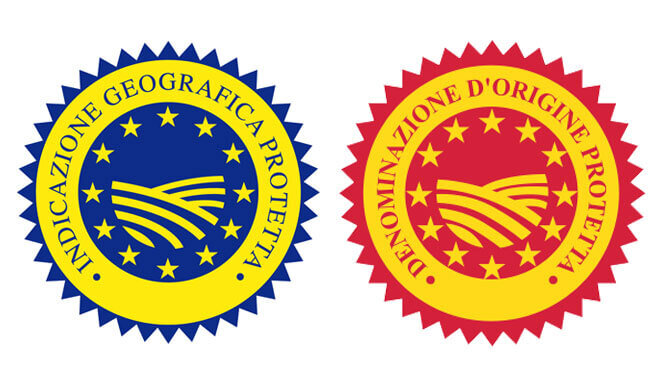What is extra virgin olive oil?
Before we learn how to buy extra virgin olive oil (EVO), it’s essential we understand exactly what it is. Those taking part in my private Tuscany wine tours will receive a full day of tuition, but in the meantime here are a few helpful guidelines.
- Extra virgin oil is an oil that’s extracted from the fruit mechanically, without using chemicals or heat.
- By Italian law extra virgin olive oil must have an acidity content of no more than 0.8%.
- There is also virgin olive oil which must have an acidity of no more than 2%.
- Oils with characteristics outside of these parameters cannot have the word “virgin” in their name or description.

Olive oil tasting class during one of my private Tuscany wine tours from Florence
Seven tips on how to buy extra virgin olive oil
1. Look for dark bottles or tin cans
Genuine extra virgin olive oil is sensitive to light, heat, and air. Each of these elements will turn the oil rancid over time. Therefore it’s essential the packaging takes this into account. The only containers fit for such a delicate product are dark bottles and tin cans. Never buy olive oil in transparent bottles, as it’s likely the product inside is anything but genuine.
So what is in those clear bottles with that gorgeous looking emerald green liquid? Well…an oil of some kind with a hefty dose of chlorophyll. It won’t harm you, but you’re not getting what you paid for.
There a few exceptions and some quality olive oils are in fact packaged in clear bottles. However the bottles are then put into boxes which offer protection from light. If taken out of the box, these oils should then be stored in a dark place.
Also avoid plastic containers as olive oil is very absorbent and will tend to assume flavor from the plastic. You can however use this characteristic to your advantage when. For a flavored oil, just drop a small amount of whatever you wish into the oil and leave it there for about a week.
Beware: knowing that consumers are getting more savvy, some crafty producers have started putting low grade oils in dark bottles. So unfortunately a dark bottle isn’t always a fool proof guarantee. But read on, and we’ll narrow things down and you will eventually have the “tools” you need.
2. Recognize EVO by it smell
It may only be possible to smell and taste an oil in a specialty shop, but it’s highly unlikely in a supermarket. However smell is your greatest ally. I suggest you always but the smallest quantity of an oil until you’ve had the chance to carry out the next two steps of smelling and tasting.
Put a small quantity in a small thin walled cup. Next cover the oil with one hand and heat up the cup with the other by applying a rubbing motion. The purpose is to get the oil warm enough to release some aroma. After a couple of minutes uncover the oil, put your nose in the cup and take a deep sniff.
A genuine EVO will smell of:
- Freshly cut grass
- Lemon
- Tomato leaves
- Green apples
- Artichokes
In a word it should smell fresh, remind you of the vegetal realm, and have a certain zing! You may smell other things too and that’s fine, as long as it reminds you of a plants or fruit.
Recognize fake EVO by its smell
What shouldn’t be there….but often is! The most common odors of low quality and fake oils are vinegar, wine, crayon, rancid walnut, rancid fat, nail polish and paint. Yes a faint smell of paint is common in fake olive oils. It’s just that you’ve never noticed it because you weren’t looking.
Now I hear you saying how on earth would anyone buy oils with all those nasty smells? Well I assure you these are the most common odors to be found in far too many commercial olive oils. Because there are so many low quality products on the market, most of us have never tasted real EVO, or as I’ve stated in the paragraph above, we’ve never really stopped to analyze the odor.
During my Olive Oil Tour of Tuscany, we start the tasting session with a well known commercial brand. Everyone says “yes this is olive oil.” Then we spend some time tasting the real thing, which is a cross selection of oils from different cultivars. After about fifteen minutes we go back to commercial brand…and bingo! All those nasty aromas of vinegar and paint are now very apparent.
3. Taste
If you have the opportunity to test out an olive oil before buying it, do so. Otherwise the following must be done at home. Using the oil you used for the smelling test,
- Take a very small sip and hold it in your mouth.
- Do a sharp intake of air through your teeth while keeping them closed.
- Roll the oil around your palate and do another intake of air
- Roll the oil around a little more and swallow
If the oil is fresh and genuine it should taste fruity or grassy, and mildly bitter . EVO’s from Tuscany will be quite bitter, pungent and peppery. When tasting Tuscan EVO neat, it will tickle your throat. This effect disappears when poured on food. The reason for these characteristics is because in Tuscany the olives are harvested before they’re fully ripe when richer in phenols and polyphenols. These elements are only contained in extra virgin olive oils, and are essential for good health. They also contribute to extending the oil’s shelf life. Read more on Polyphenols here:
4. Understanding the price point
Knowing how to buy extra virgin olive oil, is also about knowing it isn’t a cheap option. Please be aware that the yield from harvested olives is very low, at 10% to 20% with and average of 15%. So 100 kilos of olives produce about 15 kilos of EVO. In turn this means the average tree in Tuscany will produce one and a half, to two litres (4.2 pints).
Tuscan trees are kept small so in other regions and countries the yield per tree may be higher. However it still remains very low. Keep in mind that trees have to pruned, orchards have to be kept clean, the olives have to be harvested and processed, not to mention marketing costs, and all you get is around 2 litres.
Therefore when you’re presented with a label saying extra virgin olive oil, at prices below $10 per liter be very skeptical. At the time of writing (2021) I pay around €15 per litre ($17,00), even though I live in a production zone and buy from directly from the producer or mill.
5. DOP & IGP certification
If the Bottle comes from Italy look for the DOP logo (the red one below). This certifies the product and producer have met very strict quality standards. The olives have to be grown and the oil produced in a specific geographical area, it then has to reach reach the quality standards defined by the DOP regulations.
A little more relaxed is the IGP logo (the blue one) in that it allows olives to be acquired elsewhere and/or be processed elsewhere. However the product still has to reach the quality standards of the production area stated on the bottle.
It’s important to know that producers don’t have to have this certification. Those that do have voluntarily submitted their products to the authorities for testing.
You can safely buy either of these oils.

6. Best by date
Like everything else on the shelves, olive oil comes with a “best by” date, and unlike wine, the fresher the olive oil, the better. “If a bottle doesn’t have a best by date on it, don’t buy it. In putting a best by date on a bottle, the producer is declaring that that under proper storage conditions, the oil will be extra-virgin until the end of the best by date.” No date means risking purchasing an olive oil that’s less than fresh (and who knows what else).
If it has a “pressed on” or “harvest date,” it’s likely to be a higher quality oil, and if you see the name of the producer or estate, or the variety of olive used, it’s likely legit.
If kept in a dark bottle or tin and away from light, EVO will maintain its properties for about two years from the date of pressing. The ideal temperature is between 10° to 20° Centigrade 50° to 68° Fahrenheit.
If the oil gets older by a month or two, it will still be OK to use, but it will have lost some of its health benefits and flavor.
7. Know the different grades
Manufacturers who put labels that state light olive oil, regular olive oil, or just olive oil are at least being truthful. They haven’t used the term extra or virgin, so they’re telling you it’s something else. These terms mean that the oil in the bottle is obtained through chemical refinement, and not mechanical pressing.
Now to be fair, this is the way the vast majority of oils we use for cooking and dressing are produced They likely don’t present a hazard for health, unless of course the producer isn’t even using olive oil, or you make an excessive use of fats in general. Just beware of the calories…all oils contain a huge amount (about 880 per 100 grams 3.5 ounces).
The real problem are those producers who put lower grade oils or even completely fake EVO’s in a bottle, then label them as genuine. It’s all too easy to do, and I hope this article will help you avoid dishonest practices.
Private Wine Tour Tuscany
Coming to Tuscany? How about a private wine tour, where apart from wine, we also taste genuine olive oils. All the aspects discussed herein will be addressed, and you can look up a tour here.
